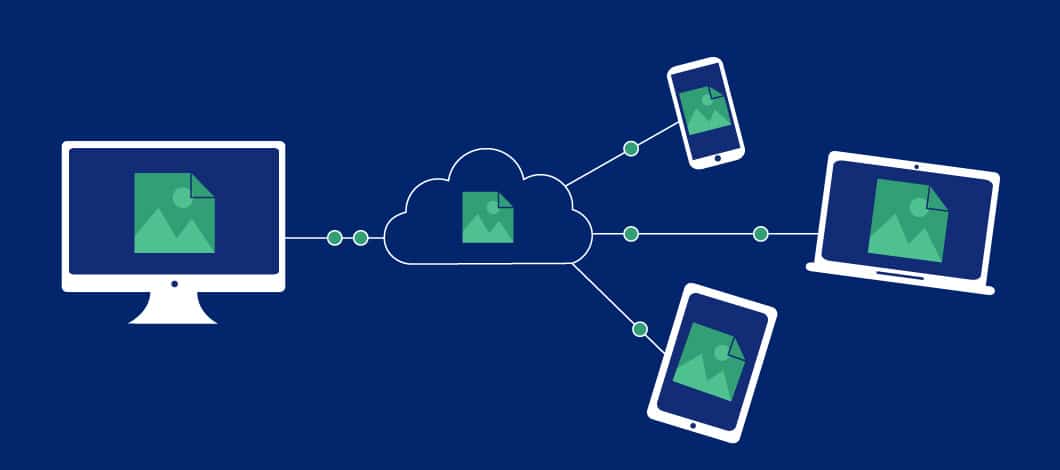These pandemic times have created financial hurdles for many businesses. Knowing how to stretch your dollar is vital for companies facing a cash crunch.
Here are 20 ways to manage a tight business budget:
- Review your financial planning
- Shift to a remote workforce
- Outsource labor tasks
- Use automation to increase efficiency
- Shift to a cloud-based infrastructure
- Negotiate with suppliers
- Join a group purchasing organization (GPO)
- Adopt just-in-time (JIT) inventory strategies
- Prioritize collection activity
- Charge late fees
- Offer incentives for up-front payments
- Optimize your marketing investment
- Focus on your target audience
- Duplicate your customer base
- Find promotional partners
- Focus on your hottest prospects
- Improve your sales efficiency
- Increase repeat business
- Activate dormant customers
- Solicit referrals
Read on to learn how to go from cash crunch to cash flow by stretching your budget.
1. Review Your Financial Planning
One of the most fundamental ways to stretch your dollar is by doing better financial planning. Review your financial projections and consider questions such as:
- What are our revenue projections?
- What are our biggest sources of revenue?
- How could we optimize these revenue sources?
- Could we introduce additional revenue sources?
- What are our expense projections?
- What are our biggest expenses?
- How could we reduce our biggest costs?
- How could we reduce other expenses?
- Do we need business financing to cover our expenses and avoid cash-flow problems?
Use these types of questions to guide your financial planning. They also can help you select which of the strategies suggested here will be most useful for you.
2. Shift to a Remote Workforce
Labor often represents a major business expense, and cutting labor costs can be an efficient way to trim your business budget. Short of laying off workers, one way to reduce labor costs can be shifting some or all of your workforce to a remote-work model.
Remote workers don’t require office space, which can reduce your rental costs. Employees working from home may also use their own equipment, reducing that expense.
Some employees may want to work from home for personal reasons, and may be willing to accept a lower salary in return for telecommuting. Remote workers also may increase your profit margin through greater productivity.
For example, Gallup research found that remote workers who feel engaged with their employers are 15% more productive than office workers, saving employers an average of $8,000 a year per worker.
3. Outsource Labor Tasks
Another method of cutting labor costs is outsourcing. Employers don’t have to pay contractors benefits such as health care, which can significantly cut costs. Some contractors charge by the hour or by the project, which can offer a less expensive business model than paying salaried workers, especially for tasks where work can be scaled to the volume your company requires.
For instance, if you only need an accountant to work 2 hours a week to manage your books, this can cost significantly less than paying a full-time accountant.
You can outsource routine tasks that don’t require your in-house team’s core competence. You can also outsource specialized tasks that involve areas of expertise outside your team’s skill set. For instance, tasks such as bookkeeping, technology support, marketing and customer service can be outsourced to providers who specialize in these areas.
4. Use Automation to Increase Efficiency
Automation offers another strategy for reducing labor costs. Using technology can often save you on the cost of hiring labor or at least reduce the amount of human labor required. It also can reduce your expenses by increasing your efficiency.
You can automate many routine tasks that involve repetitions of the same basic procedures. For example, rather than manually entering sales data into your books, you can sync your sales software with an accounting app to automatically export the information.
Examples of other tasks that lend themselves to automation include managing inventory levels, uploading content to social media profiles and handling routine customer service issues.

5. Shift to a Cloud-Based Infrastructure
Using a remote workforce, outsourcing and automation can be easier to implement when you use a cloud-based infrastructure for your company network and apps. This can reduce the costs of running an on-site information technology (IT) center. It also can save you on software installation and maintenance costs.
Doing a full cloud migration can be a major commitment. Make sure you do a thorough cost-benefit analysis before taking this step. You may find it more feasible to start by shifting specific apps to the cloud and scale up your cloud usage over time.
6. Negotiate With Suppliers
Another way you can stretch your dollar is by negotiating with suppliers. If you’re a reliable, regular customer, you may be able to persuade suppliers to sell to you at a volume discount. You also may be able to arrange financing solutions that ease the burden on your cash flow.
For example, you may be able to convince a supplier to extend you credit where you don’t have to pay for the cost of goods or services until a set amount of days after receipt. To illustrate, if your supplier lets you pay up to 30 days after receipt, this is known as a “net 30” payment arrangement. Other popular terms include net 10, net 15, net 60 and net 90.
Another alternative to cover the cost of supplies is offering a financial provider your inventory as collateral. This is a variation on a business line of credit known as inventory financing.
7. Join a GPO
When negotiating with suppliers, you can increase your leverage by joining with other companies in a GPO. A GPO negotiates volume discounts on behalf of a group of companies rather than a single buyer.
GPOs are most common in certain industries such as health care. You may be able to find an existing GPO in your industry, or you can create one by joining with other companies in your industry or outside your industry.
8. Adopt JIT Inventory Strategies
Another way to manage supply costs is by adopting a JIT approach to inventory management. With this method, you minimize inventory costs by maintaining the lowest inventory levels you need to support your manufacturing and sales processes. This cuts warehousing costs and can help avoid the cost of returns from unsold merchandise.
Successful JIT implementation depends on precise anticipation of how much supply you will need in order to fulfill sales demand. The best way to achieve this is by adopting inventory management software and using it to automate the process of projecting demand and replenishing stock levels.
9. Prioritize Collection Activity
If you’re facing a cash crunch and you have a significant number of customers who owe you money, you may be able to improve your cash flow by prioritizing collection activity. Review your accounts receivable to segregate your customers based on how many days their bills are past due, known as creating an aging schedule. Send out payment reminders or take collection action as appropriate.
Keep in mind you may be able to secure credit by using your accounts receivable as collateral. This is a type of financing known as accounts receivable financing or invoice financing.
10. Charge Late Fees
If your customers are falling behind on payments, you may be able to compensate by charging late fees. This can generate revenue from overdue fees while giving customers an incentive to pay on time.
There are a number of ways you can implement late fees. One is to impose mandatory charges on customers who fail to pay within a specified time frame. You also can offer optional late fees for customers who request deferred payments.
11. Offer Incentives for Up-Front Payments
A more positive variation on late fees is to offer incentives for early payments. This can help your cash flow by motivating more customers to pay you up-front.
You can implement this by offering a multitiered pricing model. For example, you might offer one price for customers who space their payments out over 12 months and a discounted price for those who pay everything up-front.
12. Optimize Your Marketing Investment
Another important strategy for how to stretch your dollar is optimizing your marketing budget. Many marketing teams waste dollars on nonproductive campaigns. Trimming your budget by using more profitable methods can increase your profit margins and help your cash flow.
One way to optimize your marketing budget is by using more productive methods and channels. For instance, you may notice that your blogs generate a better return on investment than your paid ads, in which case you might consider shifting more of your budget toward blogging. Similarly, if you notice that one ad campaign is performing better than another, you may decide to invest more of your budget in that campaign.
To implement these methods, you must closely monitor your marketing performance by using key performance indicators (KPIs) that measure the success of different channels and campaigns. You also can test and compare the performance of different versions of the same content or the same ad, a procedure known as split testing or A/B testing. Tracking this can help you avoid wasted expenditures and focus your marketing dollar on campaigns that work.
13. Focus on Your Target Audience
Another way to avoid wasted marketing expenditures is making sure your campaigns are aimed at your target audience. This will cut your expenses while increasing the conversion rates of your campaigns.
To focus on your target audience, begin by developing a customer profile of your ideal buyer. Define demographic characteristics of your ideal buyer such as their age, gender and income level. To assist with this process, you can analyze your current buyers and look for patterns. Analytics tools such as Facebook Audience Insights can assist you with this process.
You also can hone your target marketing by identifying the keywords your market searches on. Tools such as Google Keyword Planner can help you identify suitable keywords. You can then develop content geared towards your ideal buyer and the keywords they search on.

14. Duplicate Your Customer Base
Once you have a profile of your ideal audience, analytics tools can help you find social media users who fit your buyer profile. A powerful way to use this approach is to start by analyzing your current followers on social media. You can then display ads and content to other users with similar characteristics.
For example, to apply this strategy on Facebook, you can use a feature called Lookalike Audiences. Twitter offers a similar feature called Follower Lookalikes. Other social media platforms have parallel features.
15. Find Promotional Partners
You can increase your marketing efficiency by teaming up with promotional partners who already have your target audience among their customers. This saves you the cost of acquiring your own leads from scratch.
To implement this strategy, first make a list of prospective partners who share your target audience but sell a noncompeting product or service. Then prioritize your list and approach your top prospects with a compelling incentive for partnering with you. For instance, you might offer a percentage of sales revenue or cross-promotion of their brand to your own customers.
16. Focus on Your Hottest Prospects
Another way to stretch your marketing dollar is by focusing your sales efforts on your hottest prospects. You can create a scoring system to rank prospects based on how well they fit your ideal buyer profile. You can then prioritize these prospects when scheduling follow-up marketing and sales efforts.
To implement this, you need a scoring system and a customer-relationship-management (CRM) app. Use your CRM app to record prospect scores and automate scheduling of follow-up marketing and sales activity.
17. Improve Your Sales Efficiency
Increasing the efficiency of your sales processes can improve your conversion rates, yielding a better return on investment per marketing dollar. There are a couple major ways you can increase your sales efficiency.
One method is to create a customer journey map that lays out the steps in your prospect’s path to becoming a buyer. You can then standardize each step and eliminate bugs to create a reproducible sales process.
In conjunction with this method, you can improve the copywriting language and sales scripts you use at each stage of the process. You can use split testing to test different versions of your sales pitch and determine which generates the best results. For instance, you might test which of 2 different offers yields more sales.
18. Increase Repeat Business
Acquiring new leads can be expensive, but marketing to your existing customers doesn’t require any new lead acquisition. You can stretch your marketing dollar by investing in turning your customers into repeat buyers.
You can use several methods to promote repeat business. Delivering stellar service will tend to increase customer satisfaction and retention. Finding or developing products and services that complement ones you’ve already sold your customers will create cross-sell and upsell opportunities. Extending loyalty discounts and special sales offers can incentivize your customers to buy from you again.
19. Activate Dormant Customers
Another cost-efficient way to jump-start your marketing is reactivating customers who haven’t purchased from you in a while. Use the leads that are already in your database to bring back dormant customers.
One way to do this is by using your email subscriber list to extend a special offer to customers who haven’t purchased from you recently. Let customers know you miss their business by offering a compelling incentive such as a sales discount or a free gift.
20. Solicit Referrals
One more low-cost way to bolster your marketing is by asking your satisfied customers to refer you to their family and friends. This costs you nothing, and it instantly lends you credibility because you’re getting testimonials from trusted sources, promoting higher conversion rates.
To apply this strategy, build referral requests into your standard procedures, and develop incentives that you can offer customers for referring you to others. For example, you might offer a discount for customers who refer you to 3 people they know who might benefit from your brand.
Stretch Your Dollar to Expand Your Profits
The cost-cutting strategies outlined here can help you weather a cash crunch. They also can expand your profit margin even when your cash flow is strong. Implement these tactics to cut your costs today so you can increase your profits tomorrow.











